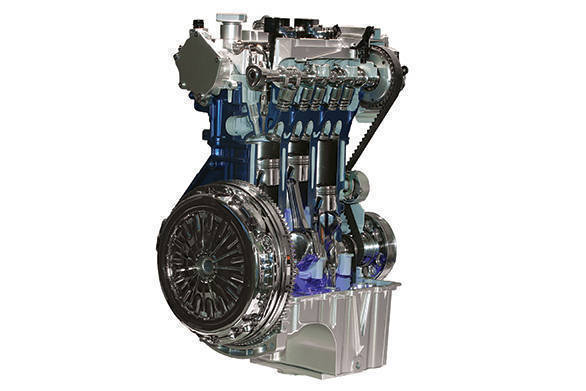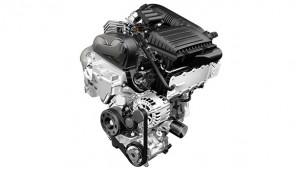Ford's 1.0-litre EcoBoost engine to get cylinder deactivation system
Ford's 1.0-litre EcoBoost engine has grown quite popular internationally and has won the Best Engine Under 1.0-litre category at the 2016 International Engine of the Year Awards. The 3-cylinder turbocharged petrol engine is available in three states of tune 100PS, 125PS and 140PS. It claims to offer the fuel efficiency of a small capacity engine and the performance of a larger unit. But now, Ford is taking its focus on efficiency one step further by adding a cylinder deactivation system to this engine (yes, the same tech you'd usually see in 6- or 8-cylinder engines). When the engine is launched in 2018, it will be the first 3-cylinder unit to feature such a system.
This system, which was developed by Ford's engineers in the UK, Germany and US, deactivates the first of the three cylinders when there is low load on the engine. According to Ford's research, it will work only for a few seconds at a time in normal driving conditions. That alone, says Ford, has the potential to improve efficiency and CO2 emissions by 6 per cent. However, this also means that the system needs to work very quickly and seamlessly.
 Ford's current 1.0-litre EcoBoost engine
Ford's current 1.0-litre EcoBoost engine
Depending on the speed, throttle position and engine load, the system can activate or deactivate the cylinder within 14 milliseconds. That is literally quicker than the blink of an eye which takes 300 to 400 milliseconds. Ford's cylinder deactivation system has been designed to operate at engine speeds of up to 4,500rpm, which means valves are being opened and closed around 40 times a second. It uses the engine's oil pressure to activate a special valve rocker that disconnects the camshaft from the valves of the first cylinder. To accommodate these extra components, the engine now uses a single-piece camshaft.
The problem with a 2-cylinder engine, however, is vibrations. Since both pistons are essentially moving up and down at the same time (with only one firing at a time), there is no counteracting force to balance the engine oscillations. Apart from the offset crankshaft and unbalanced flywheel and pulley, the new engine will also use a dual-mass flywheel and a vibration-damping clutch disc to counteract vibrations from engine oscillations.
Additionally, the valves of the deactivated cylinder will remain shut and trap the gasses. This provides a spring effect in the cylinder from the force of the compressed gasses that helps balance the engine. This function also helps keep the engine temperature at an optimum level, thereby improving efficiency. To ensure durability with the constantly varying load forces, the engine will get a new camshaft chain and valve rockers.












